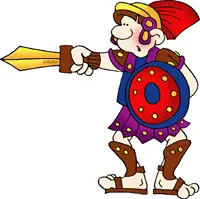Roman Daily Life
Romans in ancient times lived a simple life, with most of their day spent working or engaging in leisure activities. They would wake up early and have a small breakfast before heading off to work.
After work, they would enjoy a large meal with their family and engage in various leisure activities such as sports, theater, or socializing with friends. Despite the simplicity of their daily routine, Roman life was rich in culture, tradition, and community.
Daily life in Ancient Rome often began with a light breakfast.
Bread and water (or wine) would be served at home, or a wheat pancake could have been purchased on the way to work or school.
Sometimes meat, fish, fruit, and other items may have been served, but not each day.
Men and boys wore togas and then later tunics, which were slightly larger than a shirt typically worn today.
Women and girls also wore tunics; however, these reached their ankles and were tied near the waist.
Roman Clothing and Fashion
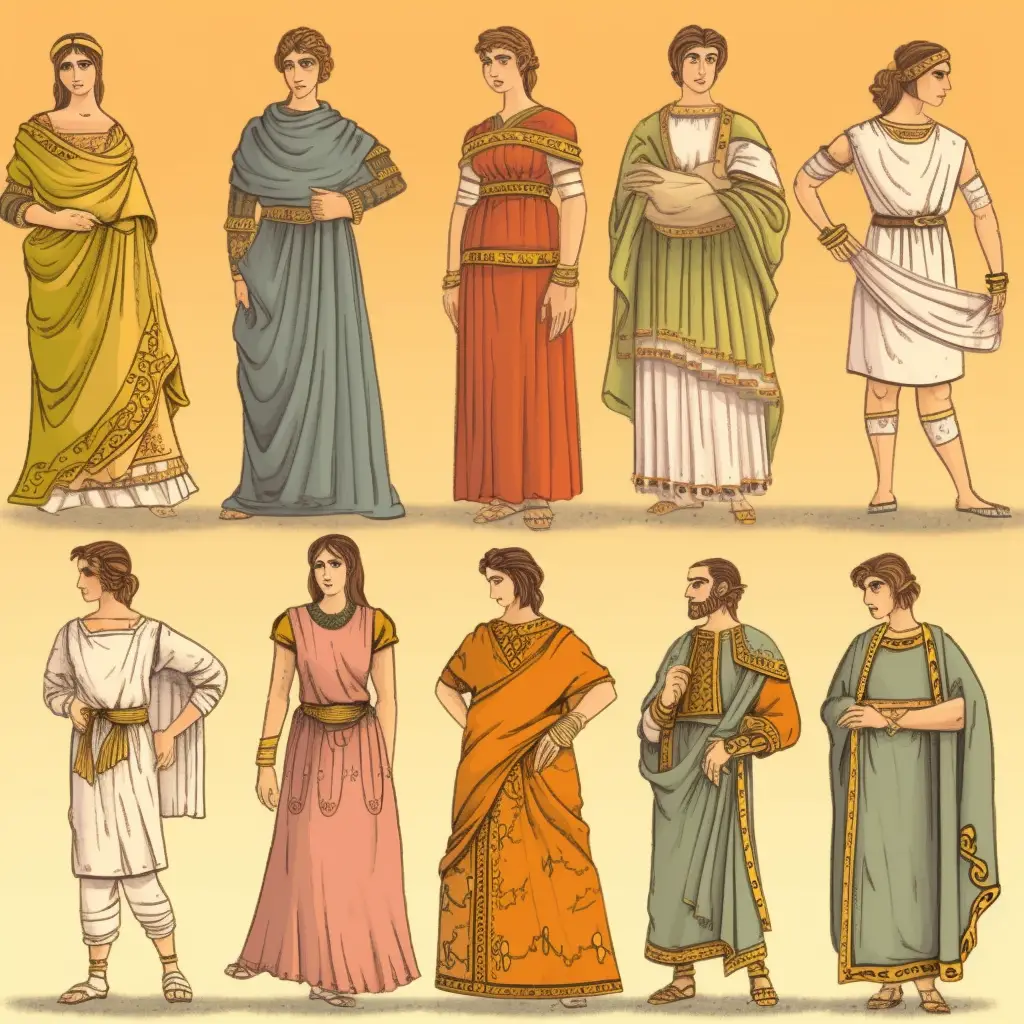
Clothing in Roman daily life was not just for protection or comfort. It was also a way to show a person’s social status or job. A common item of clothing was the tunica, a tunic-like garment worn by both men and women. The quality, length, and color of a person’s tunica could show their social standing.
For instance, senators would have a wide purple stripe on theirs, while knights had a thinner stripe. Rich Roman women would wear a stola, a long, sleeveless garment, over their tunica. When in public, Roman men wore a toga, a large piece of cloth made from wool, wrapped around their bodies in different ways to show their social and political rank.
Slaves usually wore simple clothing made from undyed wool. Soldiers wore practical clothes, including sturdy sandals and armor. This way, just by looking at someone’s clothes, you could tell their rank, job, or status.
Roman Cuisine and Food
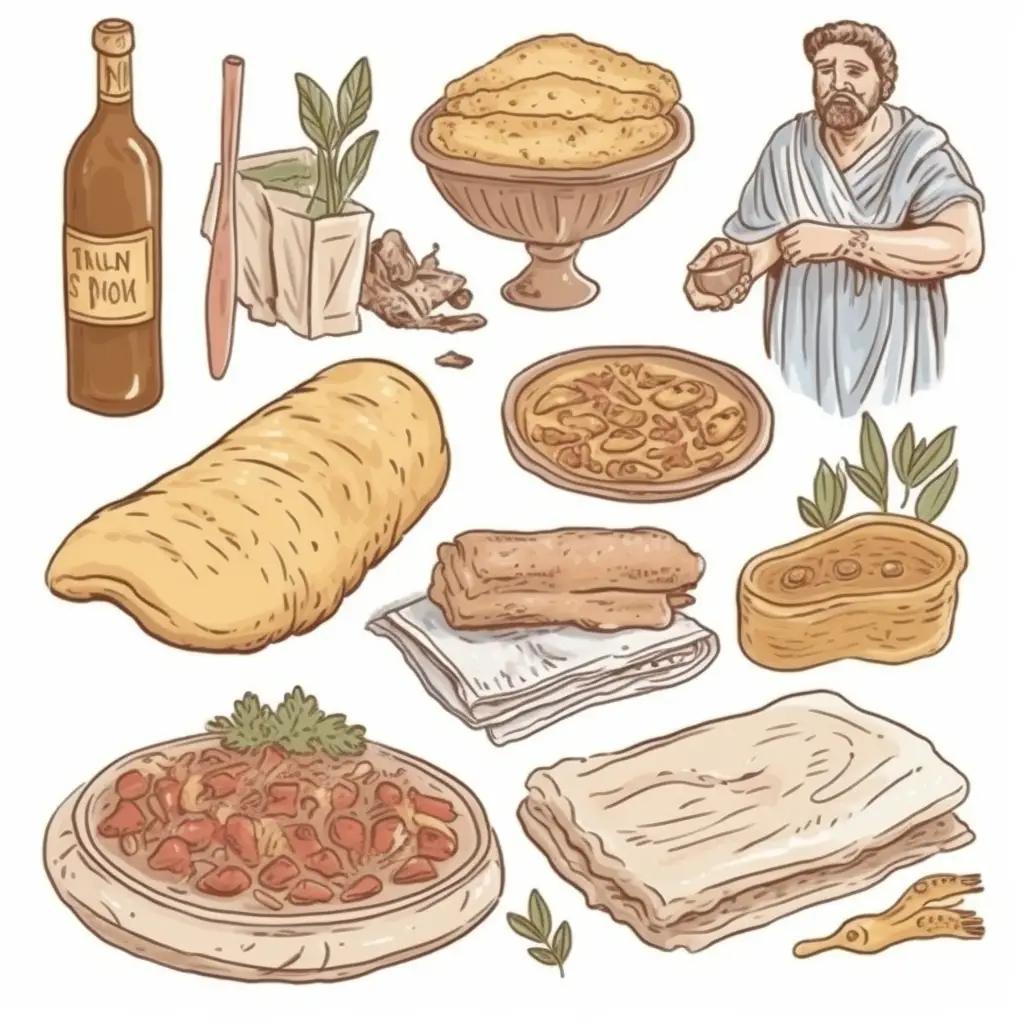
Food was an important part of daily life in ancient Rome, and it showed the difference between the rich and the poor. The usual diet for most Romans included basic foods like grains, beans, fruits, and vegetables. Bread was a key part of their meals and was often eaten with olives, cheese, or sometimes fish.
Meat was not common for most people, but they might have it on special days. On the other hand, wealthy Romans had a lot more variety in their diet. They could afford expensive imports like oysters and rare fruits, and they sometimes ate extravagant dishes.
Social events often involved big meals with many courses, and these were a chance for people to socialize and network. So, food in Roman times wasn’t just about feeding people; it was also about showing off wealth, building community ties, and celebrating special occasions.
Dinner Time
After spending some time at the baths, most would head home for their biggest meal of the day, eaten somewhere between lunchtime and dinner time.
This meal usually consisted of wheatmeal porridge. When hosting a dinner party or celebrating a special occasion, though, a Roman dinner could consist of as many as six or seven courses.
In addition to salads, eggs, garden vegetables, and fresh bread, a variety of Mediterranean seafood would have been available, including mackerel, mullets, eels, and oysters.
Meat dishes consisted of lambs, pigs, chickens, geese, ducks, and even peacocks, among others. For dessert, they ate fruit and honey-sweetened cakes.
Roman Housing and Architecture
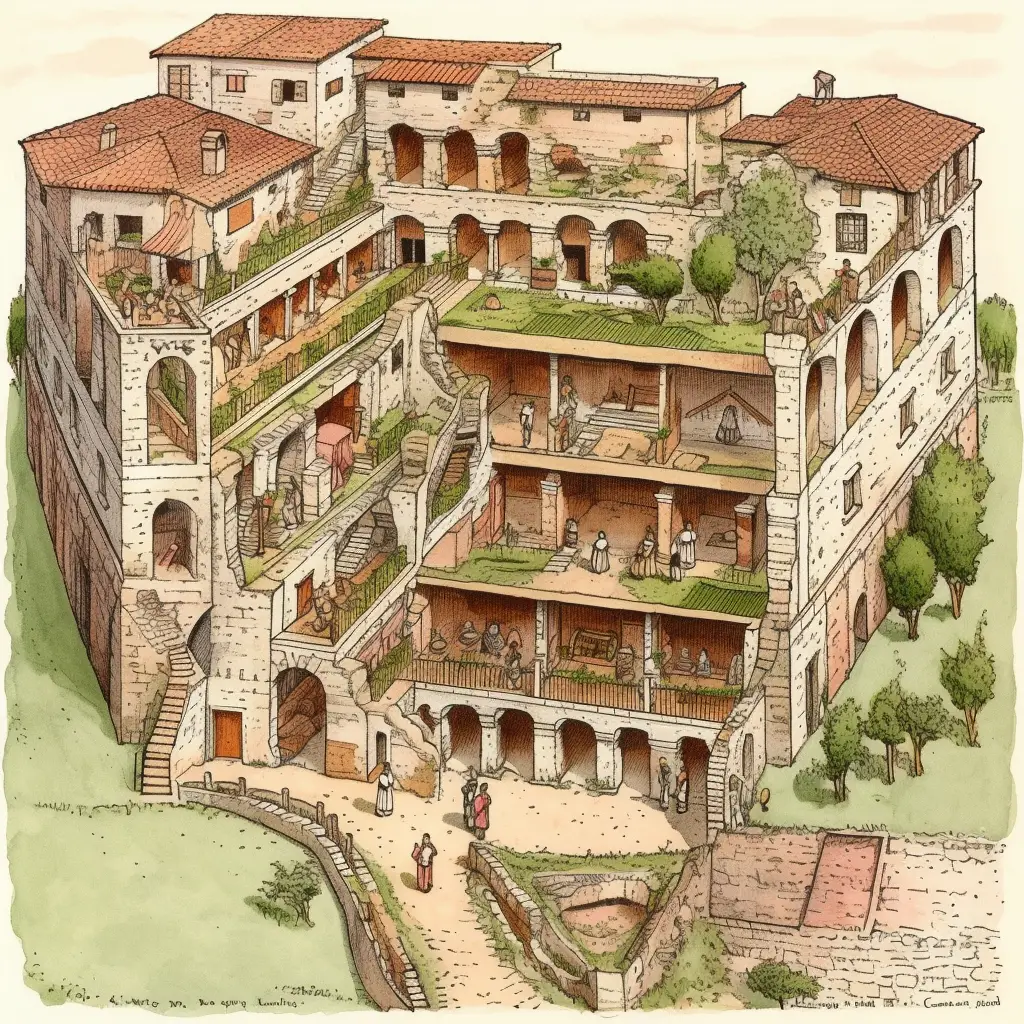
Roman housing and architecture were key parts of daily life, showing the different lifestyles of its people. Most Romans lived in simple apartments in crowded buildings, known as insulae. These buildings were made of wood and brick, and the spaces inside were small and basic.
Wealthier Romans, on the other hand, lived in larger, fancy houses in the city or countryside. These houses, called Domus, had features like a central courtyard (atrium), private baths, and beautiful wall decorations. The atrium was a place for the family to gather and show off their wealth. Some even owned big country estates, known as villas, which were like holiday homes and working farms.
Public architecture also played a big role in daily life, with buildings like bathhouses, theaters, and water supply systems (aqueducts). These showcased Roman engineering skills and served important functions, providing places for entertainment, cleaning, and water supply.
Home
While many girls stayed home with their mothers to take care of the home, some girls were allowed to attend school with the boys.
Schools often consisted of only one room and might have resembled a small Roman shop, like a bakery.
Household Chores
While the kids were in school and the mothers and daughters tended to the household chores, the fathers spent a few hours working each day.
Below are some of the typical jobs:
- Farming
- Baking
- Building
- Selling and trading goods
- Making clothing
Some became doctors, lawyers, writers, or teachers.
Many others joined the military, which provided a decent salary for a man supporting a family.
Unlike today, though, most men worked six hours or fewer each day, usually stopping around midday.
Roman Education and Schools
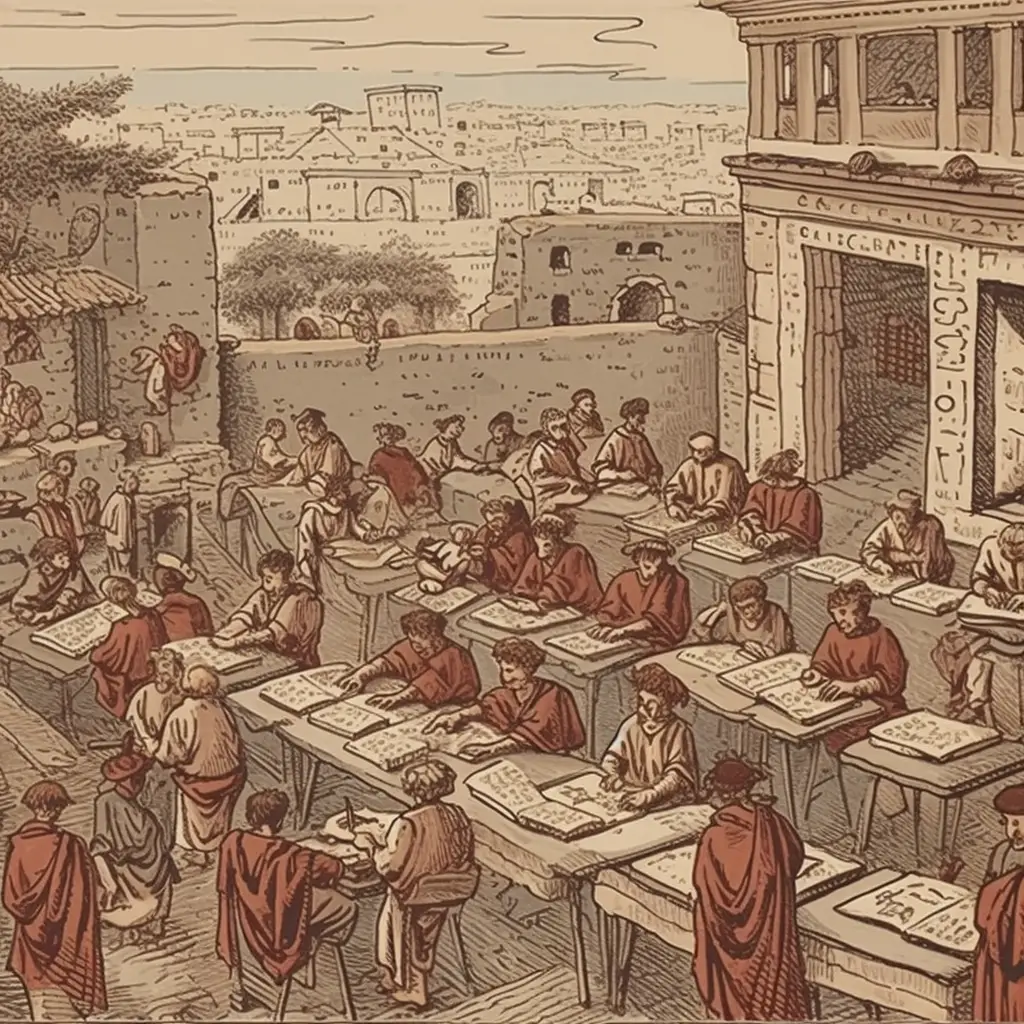
Education in ancient Rome was an important part of daily life, but what you learned often depended on your social status and whether you were a boy or a girl. Children from wealthy families usually got their basic education at home from their parents or a private tutor. They would learn things like reading, writing, math, and even Greek.
Children from poorer families, or those who were slaves, often didn’t get much school education. Instead, they would learn practical skills from their parents or masters. When they got older, boys from rich families could continue their education with a teacher, who would train them in public speaking and philosophy, preparing them for careers in politics or law.
Girls were usually educated at home, learning domestic skills to prepare for their future roles as wives and mothers. So, education in Roman times was closely tied to a person’s role in society and their chances to move up in the world.
School
Schoolmasters (or teachers) were often strict, especially those who followed the words of Aristotle, who once said, “Young people are not playing when they are learning.”
Education was taken very seriously in these schoolhouses. Students studied many of the same subjects learned in school today.
In school, math was difficult, as six Roman letters (I, V, X, L, C, and M) were used to create all numbers.
Students also learned
How to speak
How to write
How to tell time
How to use and count money
They had other lessons designed to help them in everyday life.
Weights and measurements, history, philosophy, and public speaking were also taught, among other subjects.
Roman Slavery
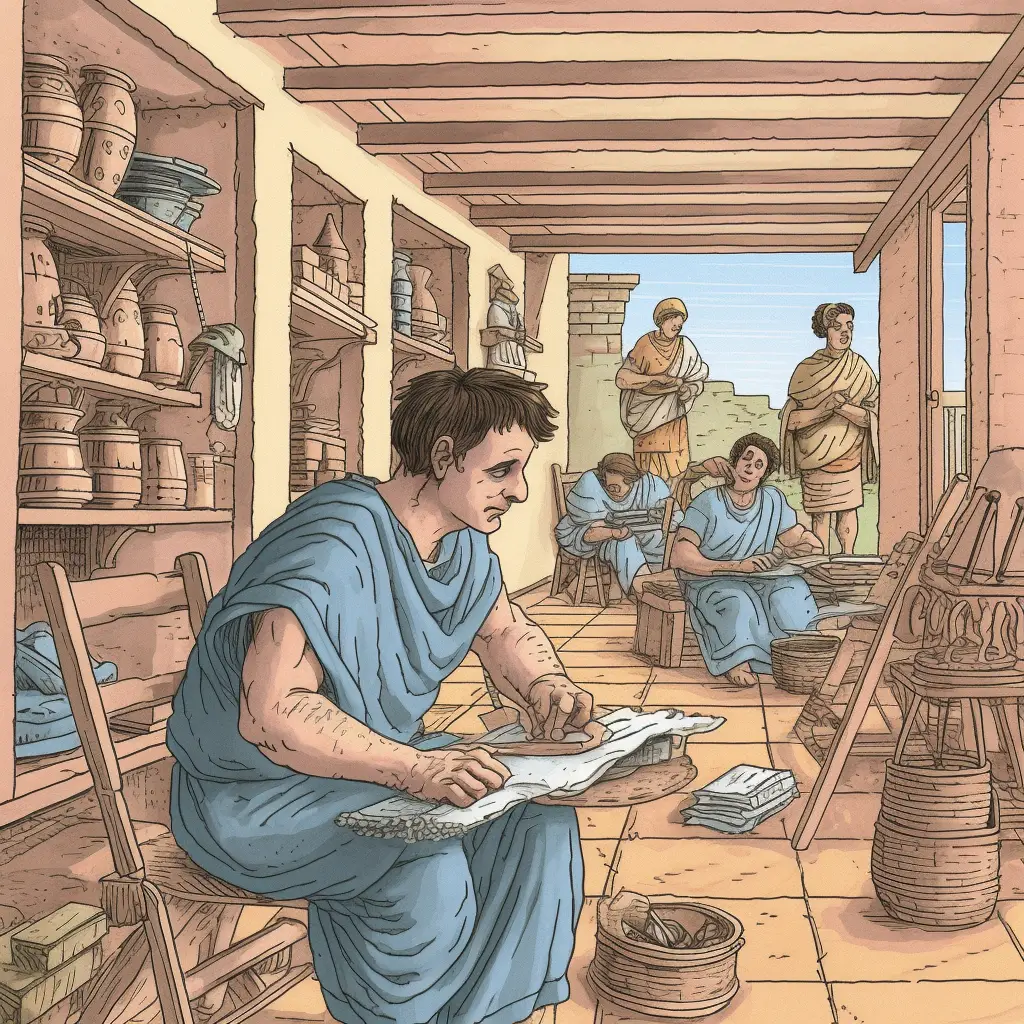
Slavery was a big part of daily life in ancient Rome, affecting nearly every part of society. The economy depended a lot on the work of slaves, who did everything from household chores and farming to specialized jobs like teaching or crafts.
Slaves were considered property and had no legal rights, but their experiences varied a lot. For instance, slaves who worked in a household often lived close to their masters and could hold important positions if they were educated. But slaves who worked in mines or farms often had a very hard life.
It was possible, although not common, for slaves to be freed and become part of Roman society with some legal rights. Even though it was a harsh and unequal system, slavery was seen as normal in Roman times and had a big impact on the economy and society
Roman Entertainment and Leisure
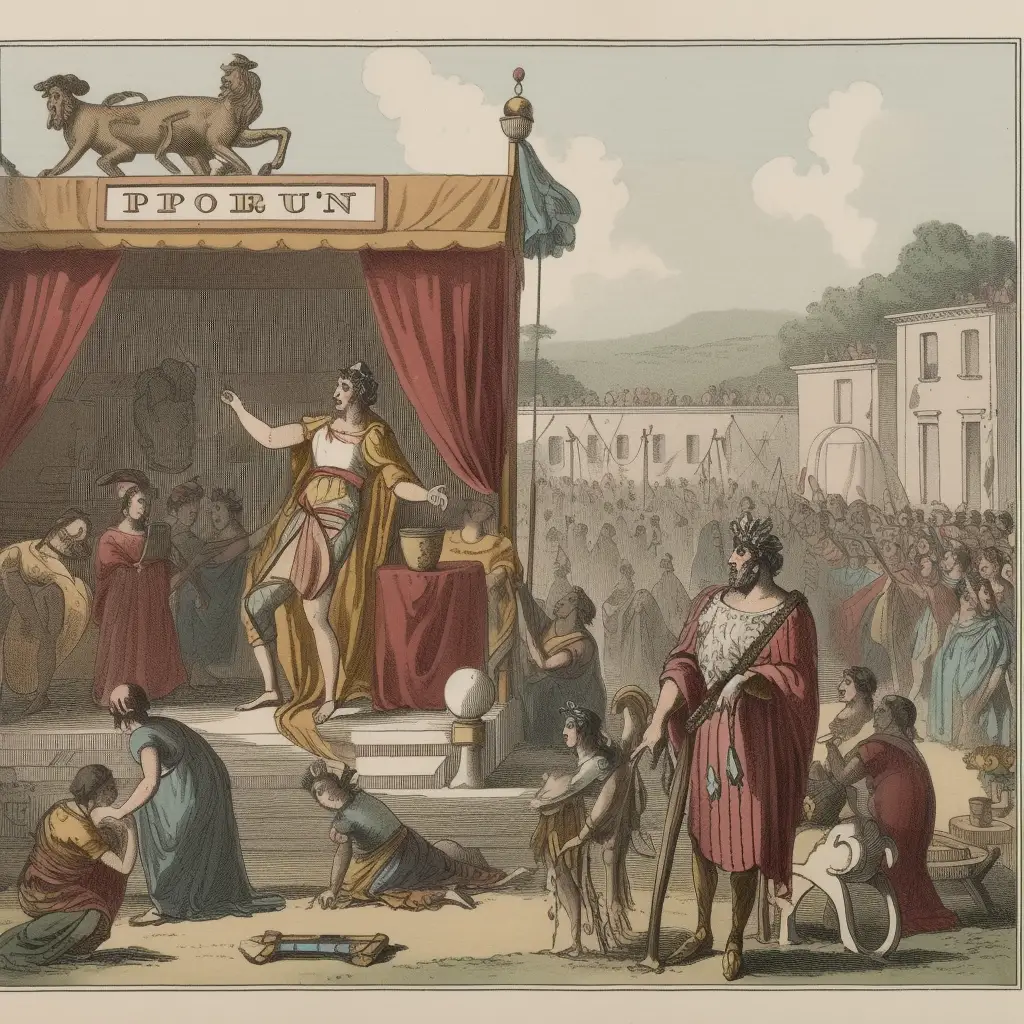
Having fun and relaxing were important parts of daily life in ancient Rome, and people did this in lots of different ways. Big events like gladiator fights, chariot races, and plays were popular, and these were often held in big arenas or theatres.
These events were a chance for people to mix with others from different parts of society. Rich Romans often had big parties in their homes as a way to show off their wealth. On a smaller scale, people liked to play board games, throw dice, and do physical activities like playing ball games or visiting public bathhouses. Reading and listening to music were also popular, especially among educated people.
In the countryside, hunting and fishing were common ways to relax. So, having fun and enjoying leisure time were key parts of Roman life, helping people to relax, socialize, and express their culture.
Entertainment
Romans valued their leisure time. Following dinner, adults and children were able to pursue other interests, such as music, art, dancing, reading, and sports.
Many attended plays, while others enjoyed chariot races. There were many options for entertainment. Gladiator fights, for example, always drew large crowds.
Many Romans spent their time in gardens and fields, assuring their families of fresh foods.
Children helped and would often use this time to learn about both family and Roman history from their parents.
Roman Religion and Beliefs
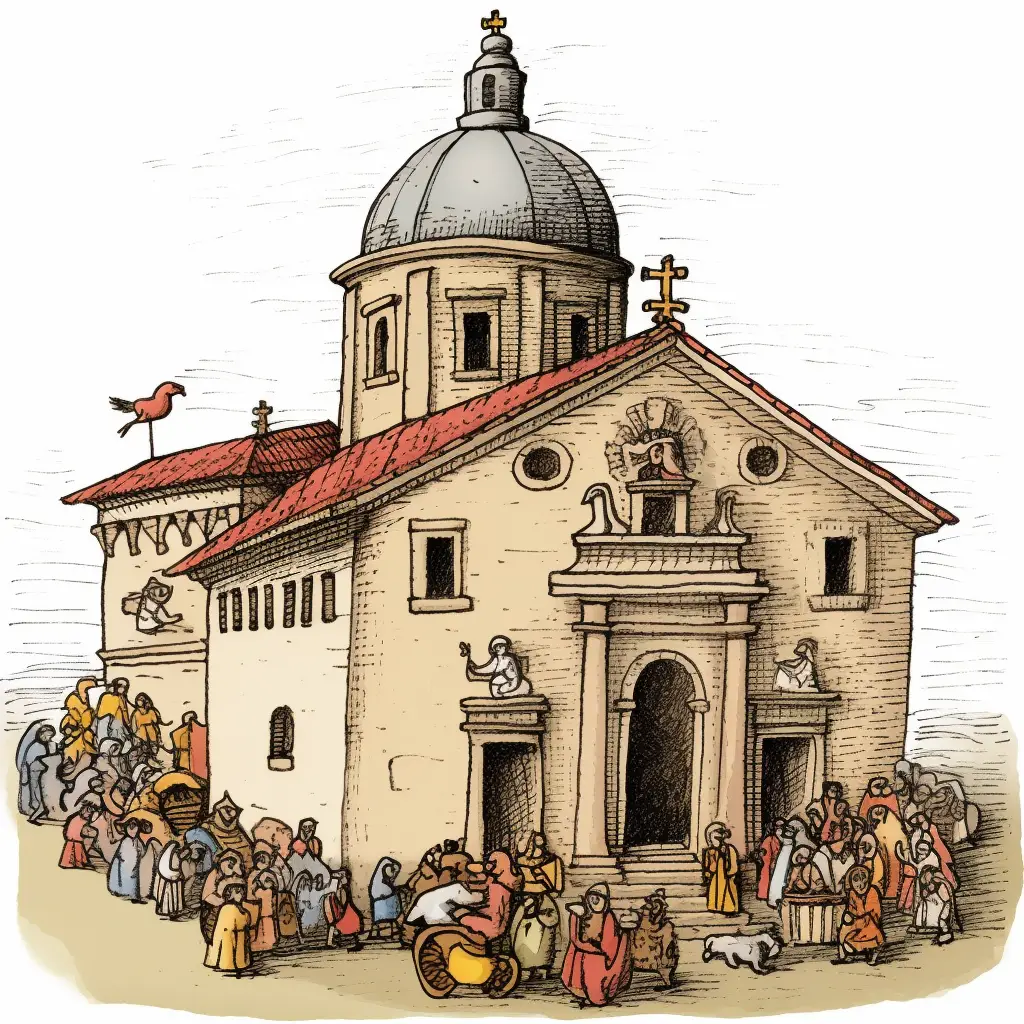
Religion was a big part of everyday life in ancient Rome and influenced many parts of society. Romans believed in many gods and goddesses, each responsible for different parts of life and nature. These beliefs influenced their daily activities.
For example, families would often worship household gods, known as Lares, in small shrines in their homes. There were also many public rituals and parties throughout the year to honor the gods. Temples were common in Rome, and these were not just places to worship, but also important gathering places for the community.
Romans also believed in interpreting signs and omens to understand the gods’ wishes. Religion was closely tied to politics in Rome, with politicians often serving as priests. Even the emperor was seen as a god. So, religion in Rome was not just about beliefs but also played a key role in keeping society together
Religion
Although some families did not visit temples often, many had small shrines in the home dedicated to specific gods and goddesses.
Like the Greeks, early Romans believed the gods and goddesses lived on top of Mount Olympus.
Families would pray to these gods to ask for protection and guidance.
Roman Social Classes
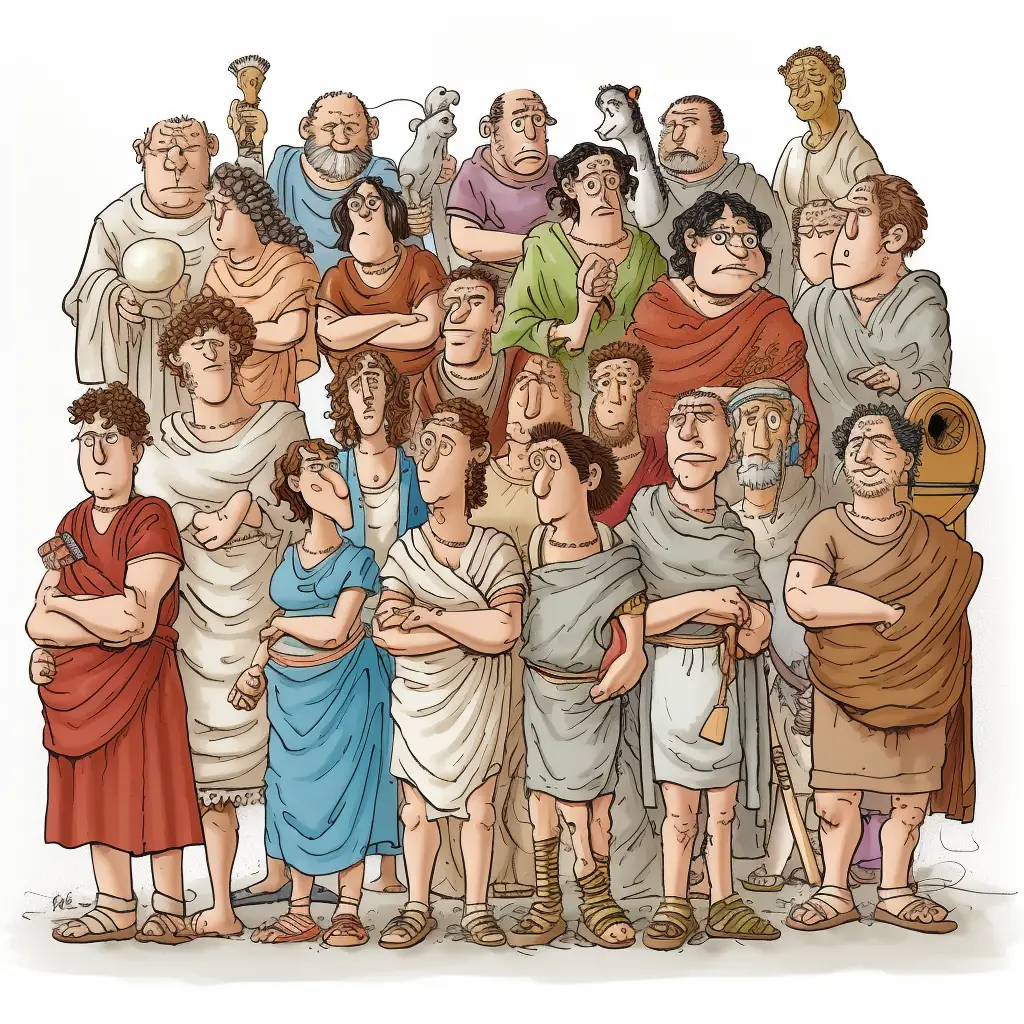
Your social class in ancient Rome had a big effect on what your daily life was like. The top class was made up of politicians and high-ranking officials, who had a lot of power and money. They lived in big, fancy houses and threw lavish parties.
Below them were the knights, who were rich businesspeople and public servants. They lived comfortably, but not as luxuriously as the top class. The largest group was the common people, who usually had simple lives and worked in farming, trade, or manual labor. At the bottom were slaves and people who had been freed from slavery.
They did a lot of the work that kept the economy going, but had few rights and often lived in tough conditions. While it was possible for people to move up in social class, it wasn’t very common.
So, the class system in Rome had a big effect on what people’s lives were like, including their roles, relationships, privileges, and responsibilities.
Roman Family Life
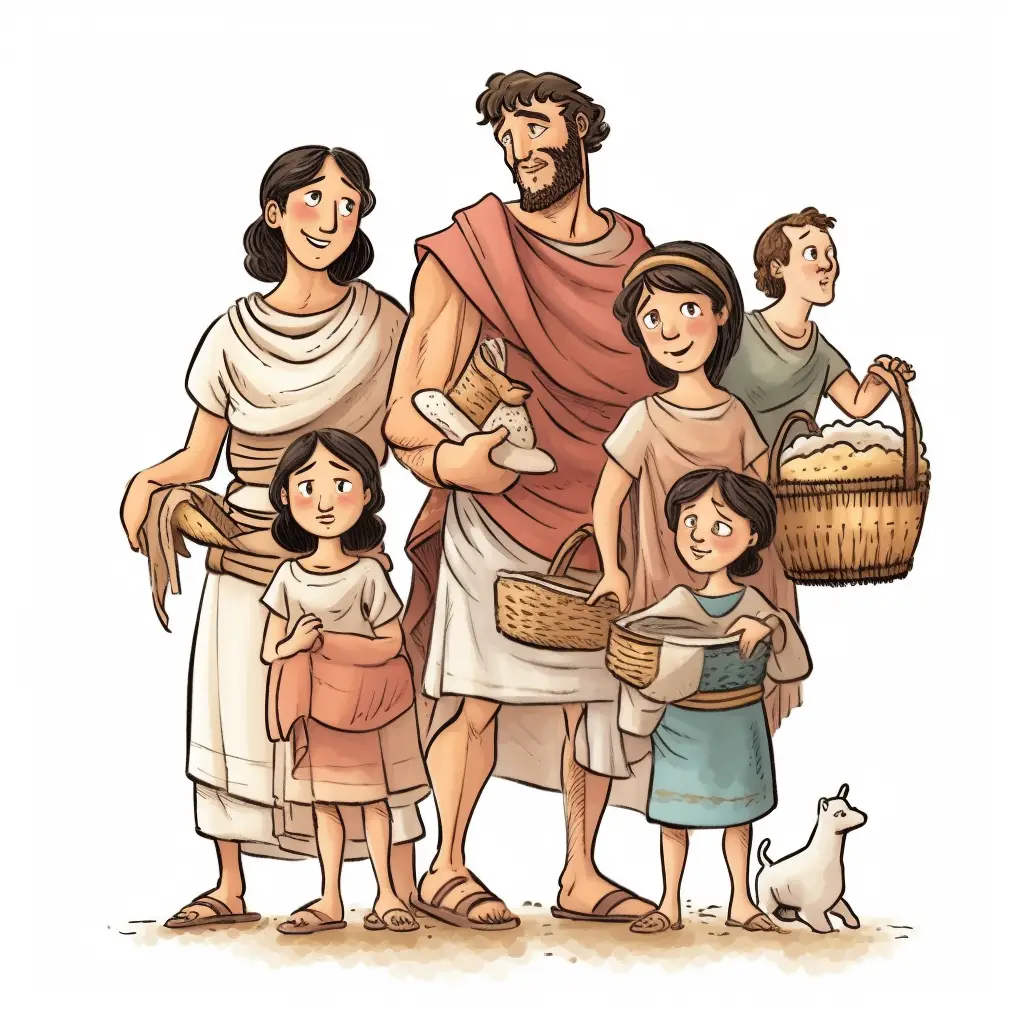
Family life was very important in ancient Rome and influenced many parts of daily life. The father was usually the head of the household and had a lot of power over his family. His job was to rule, but also to protect and care for his family.
The mother was usually in charge of taking care of the home and teaching the children when they were young. She also often managed the family’s slaves. Boys were expected to grow up to be like their fathers, taking on family roles and responsibilities.
Girls were usually taught skills to help them become good wives and mothers. Family ties extended beyond the immediate family, and grandparents, aunts, uncles, and cousins often lived nearby or even in the same house.
So, family life in Rome was not just about personal relationships but reflected the wider Roman society’s values of authority, duty, and hierarchy.
Roman Bathing and Hygiene
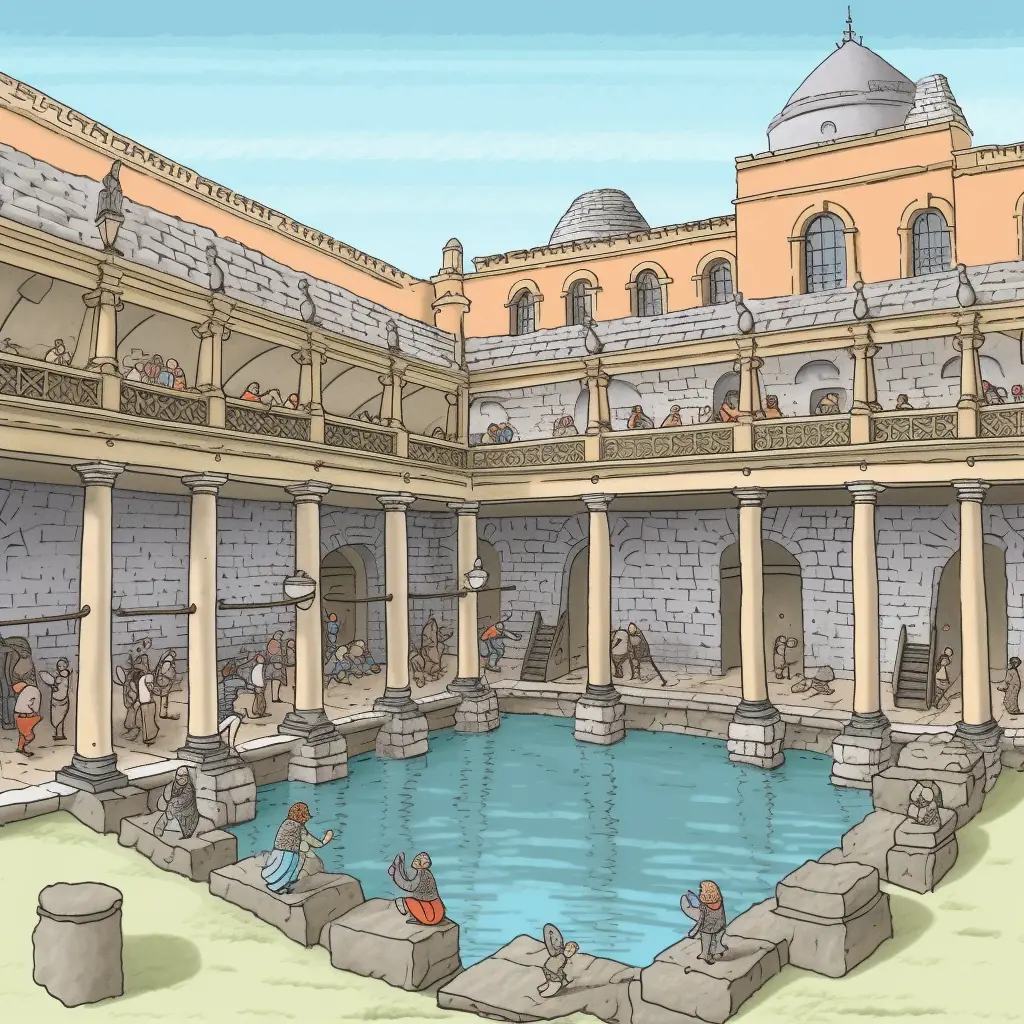
Bathing and staying clean were very important in daily life in ancient Rome. This was not just about cleanliness but was also a social and relaxing activity. Public bathhouses were common in Roman cities, and people of all classes used them to bathe, relax, and chat with friends.
These bathhouses were quite impressive, with hot and cold baths, steam rooms, and areas for exercise. Bathing was usually done every day, often in the late afternoon before dinner. People would often do some exercise, get a massage, and scrape off dirt and sweat with a special tool before they bathed.
As well as being places to get clean, bathhouses were also places where people could do business, debate ideas, or just socialize. Personal grooming, like getting a haircut or shaving, was also a regular part of Roman hygiene.
So, bathing and hygiene were a big part of Roman life, showing off their clever designs and providing a key place for socializing.
Roman Baths
After work and school ended each day, most men and boys headed to the baths, which required only a very small fee to enter.
Here people gathered, not only to wash but also to sit and talk among friends.
The bathhouses usually included gardens, gymnasiums, libraries, and other forms of recreation.
A typical cold bath resembled something like a swimming pool, while other rooms were available for hot baths.
Nighttime
At night, Romans used lamps that burned olive oil. Most families could afford to burn just one lamp, which provided only a fraction of the light from one of our electric bulbs.
Most Romans went to bed early, leaving them able to rise easily in the morning to begin a new day.

